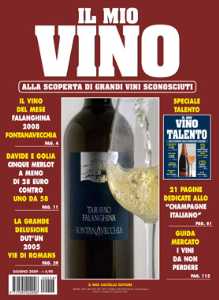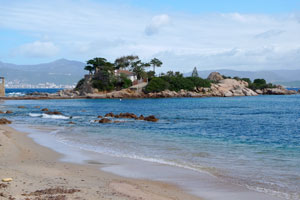Boiled bacon and cabbage in Callan
In the summer of 1968, I travelled from London to Callan (County Kilkenny, Eire) to see my ageing grandmother, Annie. She was happy to welcome me, having last done so in the late 1940s, before my family came to Australia in 1950.
‘You’ll be wantin’ something for lunch then, Martin?’ she asked, semi rhetorically, in her soft Irish drawl. I had told her I’d had no breakfast and had just hitchhiked from Clonmel.
A short while later she served up a whopping great plate of boiled bacon and cabbage, accompanied by a small mountain of creamy mashed spuds adorned with a generous lump of pale farmhouse butter. On the side were thick slices from a just-baked loaf of wholemeal soda bread. Oh, and a bottle of Guinness.
Every evening my uncle Joe drove me into Kilkenny, where we pub crawled in style, revelling in the music of the ‘ballad’ (folk) singers and fiddlers – and drinking numerous pints of Guinness. Less fun was the twilit drive home in Uncle Joe’s old Morris. I swear you could see the road through the rusting floor and only the Leprechauns knew what his blood alcohol content was.
Noshtalgia
History of Phylloxera in the Yarra Valley
As new outbreaks of the grape scourge phylloxera continue to plague Yarra valley wine makers, long time readers may recall my research into the early presence of phylloxera in Victoria’s Yarra Valley. Now I have found a report at the National Library of Australia website, indicating that phylloxera was probably present in a vineyard at Kangaroo Ground as early as 1912. From the Melbourne Argus, February 23, 1922:
“Phylloxera at Kangaroo Ground – The Government viticulturist (Mr de Castella) has reported to the Assistant Minister for Agriculture (Sir Pennington) the discovery of phylloxera at Kangaroo Ground. Vines are dying in one orchard. The owner first noticed this about four years ago, and it is thought that the pest must have been introduced about 10 years ago. Though Kangaroo Ground is not an important vine district, this outbreak deserves special notice as it is the first time phylloxera has been found so close to Melbourne. With the exception of the Geelong outbreak phylloxera has not seriously been found south of the Dividing Range. It is officially stated that the metropolitan district cannot now be looked upon as “clean” and even if it is it will not remain so for long.”
Star Drinking
Cascade First Harvest 2009 – around $24-ish the six-pack of stubbies – ***
A seasonal beer brewed using fresh green hops. Mid-amber in hue, it starts with a hop-laden nose and develops on the palate into a lightly malted style. A slightly sweet edge leads to a lovely sharp bitterness at the finish.
Monteiths Doppelbock Winter Ale – $16 plus the six pack of stubbies – ***
Another seasonal brew, this one from New Zealand. The colour is a deep russet. Blended from six different malts, it has a lovely rich malty nose. The mouthfeel is velvety and the flavours reminded me of a chocolate malted spiced with a dash of Kahlua. Delicious.
Yellow Tail Moscato 2008 – around $10 – **
A light (7.5% alcohol) spritzig white. Slightly sweet, with a tropical fruit salad nose which continues on to the palate. Soft fruity finish.
Tulloch Verscato NV – up to $16 – **
Hunter Valley, New South Wales. Verdelho, shiraz blend. Rose petal pink. Light (7.5% alcohol) sparkling style. Fruity nose, refreshing in the mouth. Sweetish at the front of the palate with a little tart apple acidity to balance. An easy drinking lunch accompaniment.
El Cheapo drinkos
In these recessionary times, punters are always on the lookout for a cheap drink. With their interests in mind, I wandered down to the local bottle shop and bought some casks, a slab of imported beer and a case of el cheapo reds and whites.
The Oettinger Pils – at only $30 the slab of 24 – was a great bargain – that’s only $1.25 per stubbie. Brewed under the ancient German purity laws of yore, the beer is hoppily aromatic with stacks of flavour on the palate – a hint of sweet malt and a bitter tang to the finish.
I tasted three two litre casks: the Banrock Station Shiraz Cabernet – $13; the Yalumba Cabernet Sauvignon – $12; and the De Bortoli Premium Merlot – $11. The Banrock Station was easily the most appealing to my palate – a good balance of fruit, dryness and acidity – I looked forward to the next glass. The other two wines each had a certain soft sweetness that did not grab me at all.
Next in the glass was a Berberana Marino El Vino del Mediterráneo at $4.60. A Spanish number that I thought was no better than it ought to be at the price.
A bottle of J.P. Chenet Sauvignon Blanc 2008 at $8 showed as good value. Totally unlike Oz and NZ styles, it has no asparagus grassy notes, but rather secondary wine flavours with a hint of dried pears and almonds.
Queensland wine
Noosa Food and Wine Fest – but where was the Queensland wine?
Noosa’s annual food and wine bash took place last month. It numbers among Australia’s premier culinary festivals and if crowd numbers are any guide, was a great success.
Numerous visitors enjoyed a feast of wine and food presentations by luminaries from the world of hospitality. Amongst others, sharing their knowledge and wandering through the stalls and chatting to the punters were John Lethlean, Ralph Kyte Powell, Huon Hooke, Peter Forrestal and Matt Preston.
Curiously, Queensland’s healthy wine industry had only microscopic representation. I stopped for a sip and was astonished to see five wine producers cooped up, shoulder to shoulder at one tiny stall.
Imagine if there were a major wine and food festival in, say, Victoria, and only five Victorian winemakers showed up – ‘twould be a state scandal.
One wonders what Queensland’s ‘Ministry of Wine’ does with its budget for wine events and wine tourism…
Questo Manti ci è o ci fa?

Oggi alla Vinix-unplugged-open-unconference, il buon Fiorenzo ha letto nel suo intervento questo simpatico editoriale comparso sul Mio Vino a cura di Gaetano Manti e che potete trovare anche qui
Trois jours en Corse
Une mini-vacance de seulement 3 jours en Còrsica dû Sud, à Portigliolu, ne permet pas d’approfondir sur l’extraordinaire richesse de cette île de beaux paysages et de superbes produits du terroir. Mais 3 jours, c’est mieux que rien…

De retour après plus de 10 ans, j’ai vu assez pour confirmer que la Corse est une de mes deux iles Méditerranéennes préférées ; si la Sicile représente pour moi le plus dense concentré de culture et d’histoire du Mare Nostrum, la Corse est le paradis des paysages et de la nature sauvage et luxuriante, d’une extraordinaire variété, avec ses pics enneigés, ses vallées vertes, ses plages sublimes, ses innombrables fleurs sauvages.
Rosé in pericolo? Ma dai!

Nelle ultime settimane abbiamo assistito “ad nauseam” alla reazione di molti produttori di vino a una proposta di regolamento Europeo, che si è diffusa in versione completamente distorta nella stampa tradizionale.
Granite Belt wine touring
by Martin Field
The kind folk at Granite Belt Wine and Tourism invited us to look around the Granite Belt wine region. ‘Take the scenic route to the Granite Belt,’ they said. We did, it was mid-summer, and on the five-hour drive from Noosa the scenic route was off, it rained all the way. In Stanthorpe, it was about fifteen degrees. Luckily, log fires were commonplace and we were happy to find one in our B&B at Heather’s Cottage.
The coolish weather was due no doubt to the Granite Belt’s elevation, some 1,000 metres above sea level – making it the only Queensland region with four seasons. The altitude has created a grape growing climate similar to that of South Australia’s Clare Valley and has made the area unarguably Queensland’s premium wine region.
We couldn’t visit all of the 60 or so cellar doors but on a madcap two-day trip, we grazed on a fine selection of regional wines and tucker. Here are some of the highlights.
At Summit Estate, Argentinean winemaker Paola Cabezas, poured me a barrel sample of her 2007 petit verdot. An inky dark drop with concentrated fruit and a very firm finish. John Handy, winemaker at Heritage Estate had an impressive 2008 reserve chardonnay: a big, dry, perfumed style showing musk and apricot nectar.
Kiwi wining and dining
by Martin Field
A bunch of New Zealand winemakers were in town recently as part of their Australian roadshow – the occasion was a grand dinner with NZ wines at Berardo’s Restaurant.
I rang the restaurant well in advance to request a no-meat, no-seafood meal. The person who answered asked if I realised that this was a seven course degustation menu with wines carefully matched to courses. I said that I’d be well satisfied with a couple of vego dishes and asked her not to drive the chef mad.
On the night, every guest was presented with a menu describing the wines and food. To my surprise, I was given my own menu, each dish a variation on the seven-course omnivore’s banquet. My meal was cleverly constructed to mirror the main menu and at the same time to harmonise with the wines. This is what I call true professionalism.
The wines were top notch, the list without any undue emphasis on the expected theme of sauvignon blanc. One of the winemakers asked me for my pick of the night and I chose the 2007 Marlborough Staete Landt Chardonnay: elegant and light-bodied, with elements of newly picked nectarine, understated oak and a crisp tangy finish.